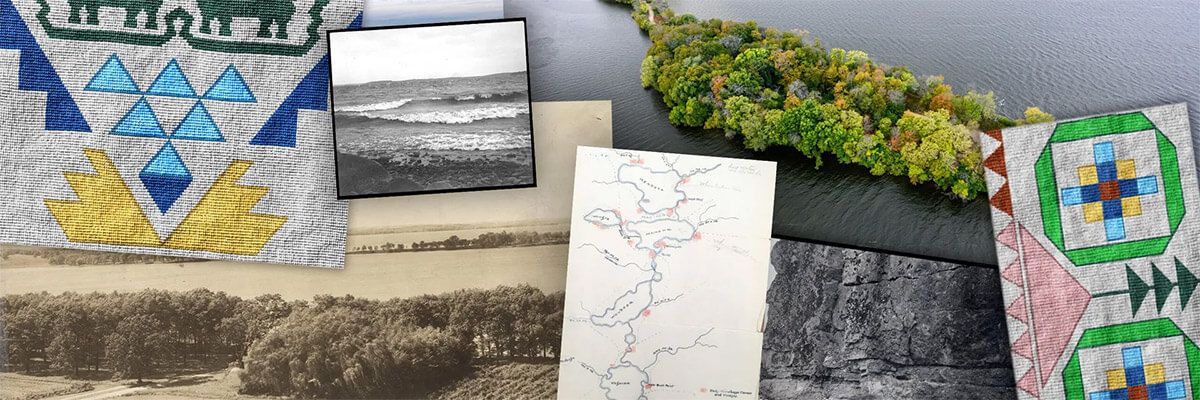In the summer of 2024, the Wisconsin Alumni Association launched a new program for its members: the Teejop Waterscapes Boat Tour. Aboard a pontoon boat, First Nations Cultural Landscape Tour guides take guests to explore the significance of Lake Mendota and its role in shaping the landscape, culture, and daily life of the Ho-Chunk in both the past and the present. The tour aims to enrich guests’ understanding of the 14,000 years of human history in this region while offering moments for reflection amid the natural beauty of a familiar place. Teejop Waterscapes Boat Tours will resume for WAA members next summer. In the meantime, here are five things you might not know about Lake Mendota.
- Wąąkšikhomįk is the Ho-Chunk name for Lake Mendota, meaning “Where the Man Lies.” This name comes from Ho-Chunk oral histories about the creation of the Four Lakes. In one event, Mąą’ųňą (Earthmaker), a hero-god, journeys from the North carrying a large kettle. While cooking, he hears a noise in the forest and steps away. In his absence, the kettle boils over, spilling its contents into the surrounding hollows and giving rise to the Four Lakes.
- From as early as 10,000 BC, Lake Mendota was home to hundreds of species of plants and animals. It was surrounded by various ecosystems including oak savanna, wetlands, and prairie, where both wildlife and crops flourished. Cold springs bubbling up from the lake’s bottom attracted a variety of fish, and the shallows were blanketed with lush beds of wild rice. The lake’s rich ecosystem not only provided abundant resources but also held deep spiritual significance for the Ho-Chunk. Medicine springs, natural openings in the ground where groundwater is pushed to the surface, were seen as a source of life and a place of connection to the underworld. Many of these springs are still visible around the lake, particularly near the shoreline around Spring Harbor.
- In November 2021, Tamara Thomsen ’91, MS’93, and a team of divers from the Wisconsin Historical Society excavated two centuries-old dugout canoes from the depths of Lake Mendota. As of May 2024, archaeologists had identified up to 11 canoes, dating back between 800 and 4,500 years. Notably, the 4,500-year-old elm canoe is the oldest dugout canoe recorded in the Great Lakes. These ancient artifacts were found near each other, prompting research into historical changes in the shoreline and water levels. Striations along the shoreline indicate that the lake was once about 5 feet higher than it is today. Additionally, it was common practice to weigh down and submerge canoes for winter storage, which may explain the concentration of canoes in one area.
- At one point, Lake Mendota was surrounded by white sandy beaches and had crystal clear water. Shaped over 15,000 years ago by melting glacial ice, the lake basin could be easily seen for centuries. Today, its more familiar blue-green hue is largely the result of algae blooms. In spring, the lake often enters a “clear water phase,” as zooplankton consume the algae, providing a glimpse into what the lake’s visibility may have been a millennia ago.
- Madison was once home to more than 1,500 effigy and burial mounds, many situated along the shores of the Four Lakes. In Teejop — the Ho-Chunk name for the area known as Madison — Lake Mendota is regarded as the heart of mound society. These large clusters of mounds, intentionally built on elevated hills and bluffs overlooking the water, serve as sacred burial sites and living spiritual spaces. Their placement underscores the profound significance of water in Ho-Chunk spiritual and cultural practices.










